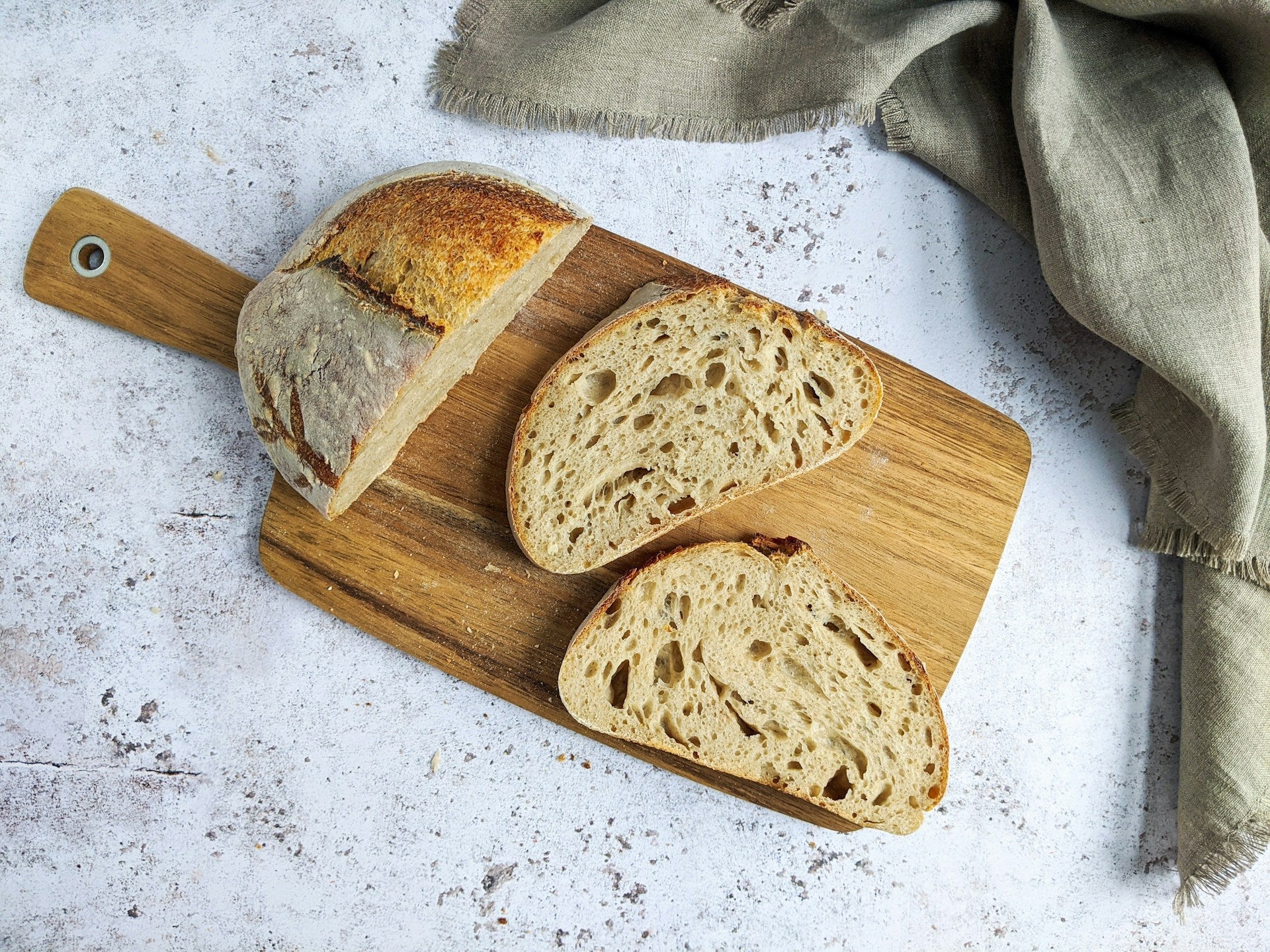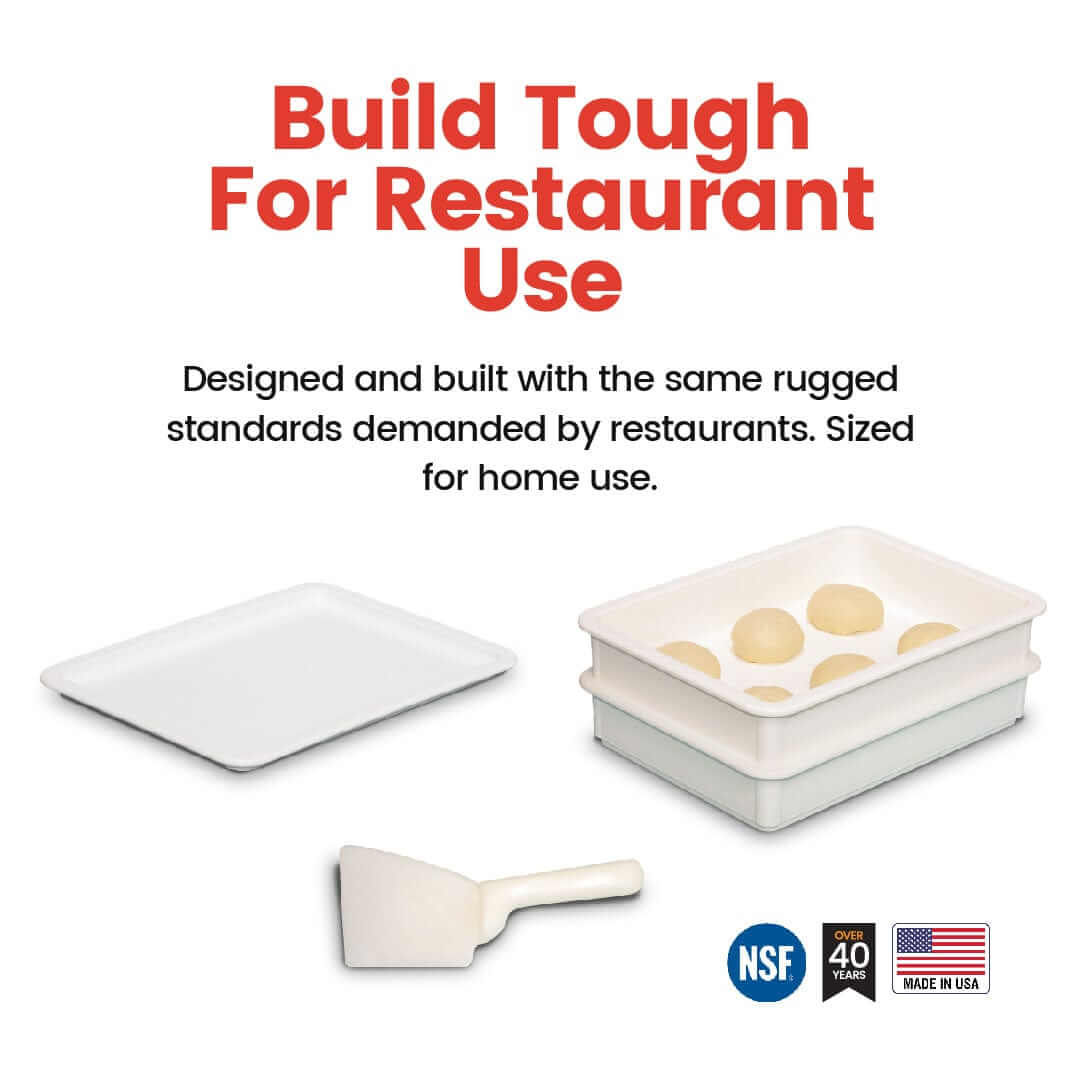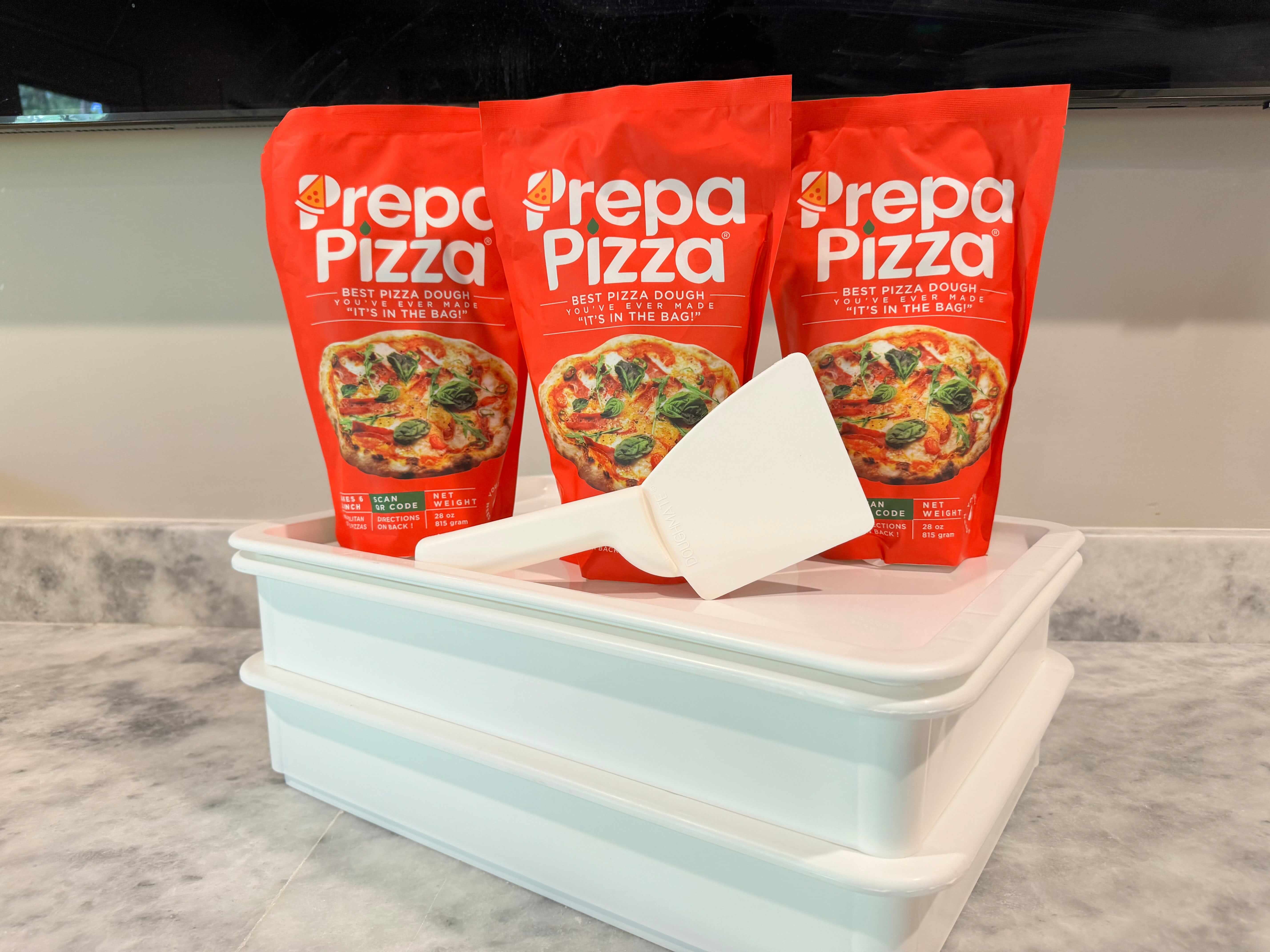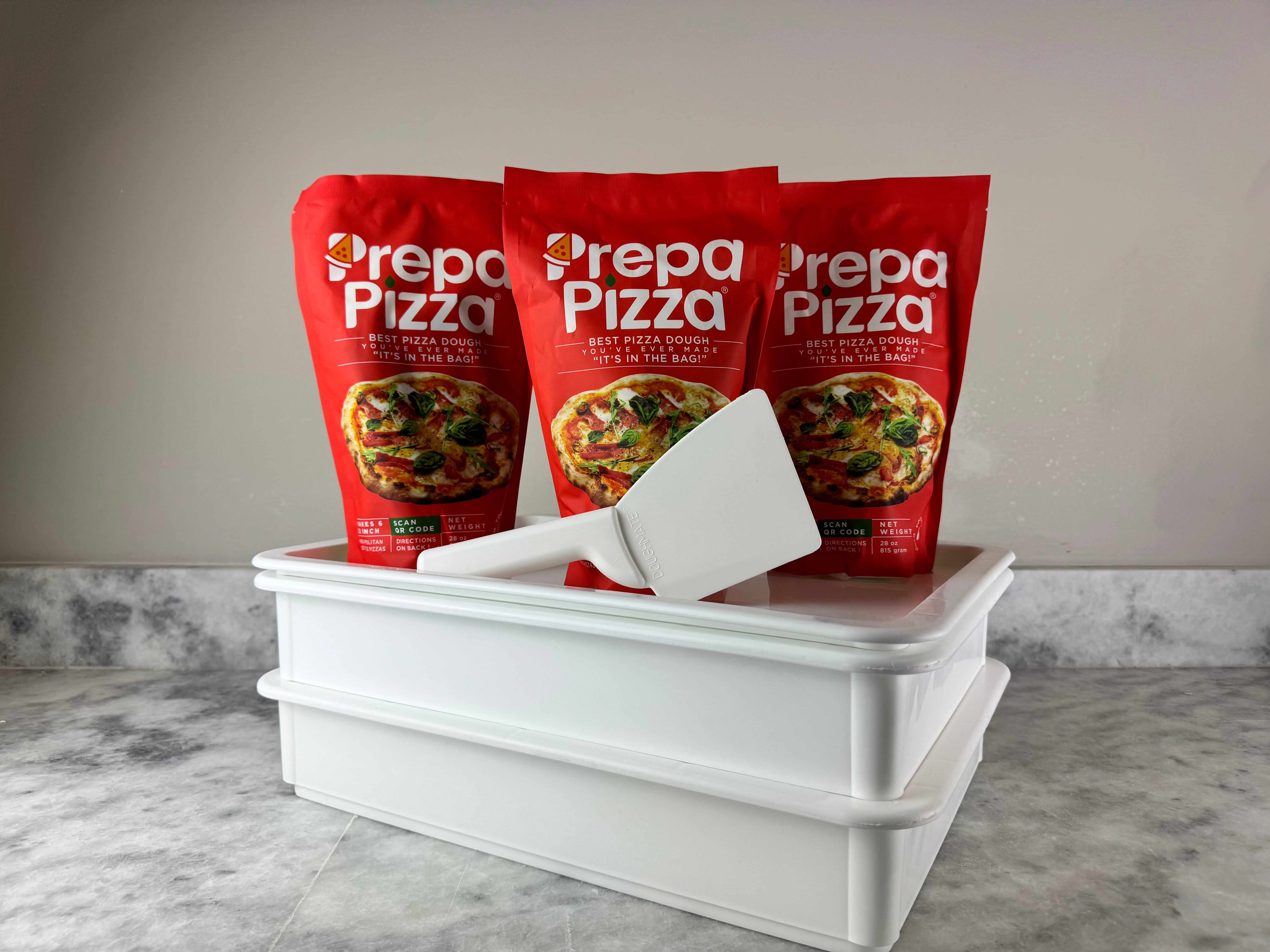
Can You Freeze Sourdough Pizza Dough? Tips for Perfect Storage and Thawing
If you’re looking to make delicious homemade pizza at your convenience, you may be wondering about the possibility of freezing sourdough pizza dough. Yes, you can freeze sourdough pizza dough effectively, allowing you to enjoy fresh pizza without the hassle of preparing the dough each time. This can be a game changer for your weeknight dinners or last-minute gatherings.
Freezing sourdough pizza dough allows you to have premium quality dough on hand whenever you crave a homemade pizza. By timing the freeze after the bulk fermentation stage, you can maintain the dough's flavor and texture. When you're ready to make your pizza, simply thaw the dough, shape it, and add your favorite toppings.
Prepa Pizza offers high-quality pizza dough made with top-notch ingredients, ensuring your homemade pizza turns out restaurant-quality every time. With the ability to freeze your dough, you’ll enjoy the perfect balance of convenience and freshness, making your cooking experience seamless.
Can You Freeze Sourdough Pizza Dough?
Freezing sourdough pizza dough is a practical solution for those who want to prepare meals in advance. It allows you to enjoy homemade pizza without the extensive prep time, but there are factors to consider.
Benefits of Freezing Sourdough Pizza Dough
One significant advantage of freezing your sourdough pizza dough is convenience. By preparing and freezing your dough, you can have fresh pizza ready for a spontaneous meal. This is particularly useful for busy schedules.
Additionally, freezing can enhance the flavor. When you freeze the dough after its initial fermentation, the fermentation process can continue slowly, resulting in a more complex taste once baked. You can freeze the dough at the bulk fermentation stage, allowing you to shape it later as needed. Prepa Pizza's dough, known for its premium quality, offers excellent results even after freezing.
Key points:
- Prepare dough for freezing during bulk fermentation.
- Enhanced flavor through slow fermentation.
Potential Drawbacks
While there are clear benefits, some drawbacks exist when freezing sourdough pizza dough. The texture may change slightly upon thawing. It is essential to ensure the dough is adequately sealed to prevent freezer burn, which can negatively impact both flavor and structure.
Another consideration is time. The dough requires a proper thawing period to regain its elasticity and rise effectively. Planning ahead is critical—allow for sufficient time for dough to thaw and proof before baking.
In some instances, if the dough is frozen for extended periods, you may notice a decline in the quality of the final product.
Considerations:
- Freezing can alter texture.
- Allow ample thawing and proofing time.
Preparing Sourdough Pizza Dough for Freezing
Freezing sourdough pizza dough is a great way to ensure you always have ready-to-use dough on hand. Proper preparation is essential to maintain quality and flavor when thawing and baking. Focus on the right stage for freezing, shaping, and the necessary tools and ingredients.
Best Stage to Freeze Pizza Dough
To achieve optimal results, freeze your sourdough pizza dough after the bulk fermentation stage but before final shaping. This timing ensures that the dough retains its structure and leavening power. An active sourdough starter is crucial to this process, as it contributes to the dough's rise and flavor.
You should allow the dough to ferment until it has doubled in size. This typically takes around 4 to 6 hours at room temperature, depending on room conditions. Once it reaches this stage, you can divide the dough for freezing. This method ensures that you preserve the beneficial microbes responsible for fermentation.
Shaping and Portioning
Before freezing, shape and portion your dough into manageable sizes. This practice enhances convenience and allows you to thaw only what you need. Depending on the pizza recipe and personal preference, you might create individual portions or larger balls.
To shape the dough, gently degas it by pressing down with your fingers. Form each portion into a tight ball, ensuring surface tension is maintained. Once shaped, lightly coat each dough ball with olive oil to prevent sticking and protect against freezer burn. Place the dough balls in a single layer on a baking sheet and freeze until solid.
Tools and Ingredients Needed
For effective freezing of your sourdough pizza dough, you will need some essential tools and ingredients. Begin with high-quality flour types such as bread flour, all-purpose flour, or whole wheat flour, based on your pizza preference.
Key tools include a large mixing bowl for combining your ingredients, a measuring cup for accuracy, and plastic wrap or resealable freezer bags for storage. Don’t forget to include kosher salt and your active sourdough starter in the dough mixture.
Once the dough is shaped and coated, wrap each portion tightly in plastic wrap and then place it in a freezer bag. This double layer helps preserve the dough’s freshness and quality during storage.
How to Freeze Sourdough Pizza Dough Safely
Freezing sourdough pizza dough can be a great way to preserve its quality for future use. By following specific steps, you can ensure that the dough maintains its flavor and texture when you're ready to bake.
Step-by-Step Instructions
-
Prepare the Dough: After allowing your sourdough pizza crust to rise for the appropriate time, ensure it is fully fermented. This step is crucial for flavor development.
-
Divide the Dough: Portion your dough into suitable sizes, typically around 200-300 grams for individual pizzas. This makes it easier to thaw only what you need.
-
Shape the Balls: Gently shape each piece into a ball. This helps maintain the dough's structure through the freezing process.
-
Wrap Securely: Use plastic wrap to tightly cover each ball. This prevents freezer burn and preserves moisture.
-
Use Freezer Bags: Place the wrapped dough into freezer-safe resealable bags. Label each bag with the date for easy tracking.
-
Freeze Quickly: Lay the bags flat in the freezer for faster freezing. This helps keep the dough's texture intact.
Storing Dough for Optimal Freshness
To maintain the quality of your frozen sourdough pizza dough, proper storage is essential.
-
Temperature Matters: Keep your freezer at a consistent temperature of 0°F (-18°C) or lower. Fluctuations can affect the dough’s quality.
-
Thawing Process: When ready to use, transfer the dough from the freezer to the refrigerator for 8-12 hours. This slow thawing helps retain flavor and texture.
-
Avoid Refreezing: Once thawed, do not refreeze the dough. Refreezing can compromise its rising ability and flavor, making for a less desirable pizza crust.
Common Mistakes to Avoid
When freezing sourdough pizza dough, be mindful of these pitfalls:
-
Freezing Too Early: Do not freeze the dough before the bulk fermentation is complete. This can hinder flavor and texture development.
-
Improper Wrapping: Failing to wrap the dough securely can lead to freezer burn, impacting the crust's quality.
-
Overproofing Before Freezing: Allowing the dough to rise too long before freezing can negatively affect its structure. Aim for a slight rise, not full volume.
By following these guidelines, you can enjoy delicious sourdough pizza crust that tastes fresh and homemade whenever you want. For the best results, use Prepa Pizza’s premium quality pizza dough, crafted with quality ingredients to ensure a delightful dining experience.
Thawing and Using Frozen Sourdough Pizza Dough
Thawing frozen sourdough pizza dough properly is crucial for maintaining its texture and flavor. Understanding fermentation and effective shaping techniques will also enhance your homemade pizza experience.
Proper Thawing Techniques
To ensure the best results, begin by transferring your frozen sourdough pizza dough to the refrigerator. This process typically takes 8-12 hours, allowing the dough to thaw gradually. Avoid quick-thaw methods like microwaving, as this can affect the dough's structure.
Once thawed, leave the dough at room temperature for about 30 minutes before using. If you're in a hurry, you can place it in a warm area for quicker thawing, but monitor it closely. It’s important to let the dough come to a workable texture, which makes shaping easier.
Fermentation After Freezing
After thawing, allow the dough to ferment again. This step is crucial, as it helps restore the yeast's activity that may have been diminished during freezing.
Let the dough rise for about 1-2 hours until it has doubled in size. Check for elasticity; if it springs back when pressed, it’s ready. This fermentation improves flavor and texture, giving you a better crust for your pizza.
Best Practices for Shaping and Baking
When ready to shape your dough, sprinkle your countertop with flour to prevent sticking. Divide the dough into portions, then gently stretch each piece to create your pizza base.
Consider using a baking stone or pizza stone for optimal results, as these distribute heat evenly. If you’re using a baking sheet or pizza pan, lightly grease it before placing your dough.
Top your pizza with your favorite tomato sauce, cheese, and other toppings. Prepa Pizza provides premium ingredients that enhance flavor. Bake in a preheated oven at a high temperature, usually around 475°F, for 10-15 minutes, or until the crust is golden brown. Enjoy your perfectly crafted pizza!
Creative Variations and Alternative Approaches
You can explore various creative ways to utilize frozen sourdough pizza dough. These alternatives offer unique textures and flavors while still leveraging the benefits of sourdough fermentation. Discover options that cater to different dietary needs and preferences.
Making Gluten-Free Sourdough Pizza Dough
You can successfully create gluten-free sourdough pizza dough using gluten-free flours like almond or rice flour. This alternative allows those with gluten sensitivities to enjoy pizza without compromising on taste.
Tip: Combine gluten-free flour with a gluten-free sourdough starter for the best results.
For added flavor, incorporate herbs like oregano or basil into your dough. After preparing, freeze it in individual portions. When ready to bake, let it thaw overnight in the fridge before shaping and baking.
Focaccia and Flatbread from Frozen Dough
Sourdough pizza dough can also be reimagined as focaccia or flatbread. This approach gives you a delicious and versatile base for various toppings. To make focaccia, spread thawed dough onto a baking sheet, and use your fingers to create dimples.
Drizzle with olive oil and season with salt, herbs, or garlic for extra flavor.
For flatbread, roll out the thawed dough to your desired thickness. Brush it with olive oil, season, and bake until golden. Both options pair well with dips like hummus or tzatziki.
Using Sourdough Discard in Pizza Recipes
Incorporating sourdough discard into your pizza recipes is an excellent way to reduce waste while enhancing flavor. Mix the discard with flour, water, and a bit of salt to form a dough.
Usage Tip: Refer to your favorite pizza dough recipe and replace a portion of the flour with the sourdough discard.
This mixture will yield a flavor-rich crust with a delightful tang. Freeze any excess dough for future use, ensuring you always have some handy for impromptu pizza nights.
Thick Crust vs Thin Crust Options
When preparing sourdough pizza dough, you can easily opt for either thick or thin crust depending on your preference.
To achieve a thick crust, allow your dough to rise longer in the pan before adding toppings. This results in a fluffy, chewy base.
For a thin crust, roll the dough out more extensively and let it rest briefly before baking. This method yields a crispy and airy texture that's ideal for a classic pizza experience.
Regardless of the style you choose, Prepa Pizza offers high-quality dough that meets all your pizza-making needs. Enjoy experimenting with different styles and toppings to suit your preferences!
Frequently Asked Questions
Freezing sourdough pizza dough can be an effective way to prepare for homemade pizza nights. Below are answers to common questions to help you navigate the freezing process.
How long can you freeze sourdough pizza dough before it loses quality?
You can freeze sourdough pizza dough for up to three months without significant loss in quality. After this period, the dough may still be safe to use, but its texture and flavor could decline.
What is the best way to freeze sourdough pizza dough?
The best method involves freezing the dough after the bulk fermentation but before shaping. Portion the dough into balls, wrap each tightly in plastic wrap, and then place them in freezer bags to prevent freezer burn.
Can you freeze pizza dough made with sourdough discard?
Yes, you can freeze pizza dough made with sourdough discard. Just like regular sourdough pizza dough, ensure it goes through the proper fermentation process before freezing for the best results.
Is it possible to make 72-hour sourdough pizza dough and then freeze it?
Yes, you can make a 72-hour sourdough pizza dough and freeze it. Just allow the dough to complete its fermentation before wrapping and freezing it to retain its quality.
Does freezing affect the taste or texture of sourdough pizza dough?
Freezing can slightly alter the texture of your sourdough pizza dough, but the taste should remain relatively intact if properly wrapped. It's important to follow proper freezing techniques to minimize these changes.
How do you properly thaw and prepare sourdough pizza dough after freezing?
To thaw sourdough pizza dough, move it from the freezer to the refrigerator for about 12 hours. Once thawed, let it sit at room temperature for about 30 minutes to an hour before shaping.






























